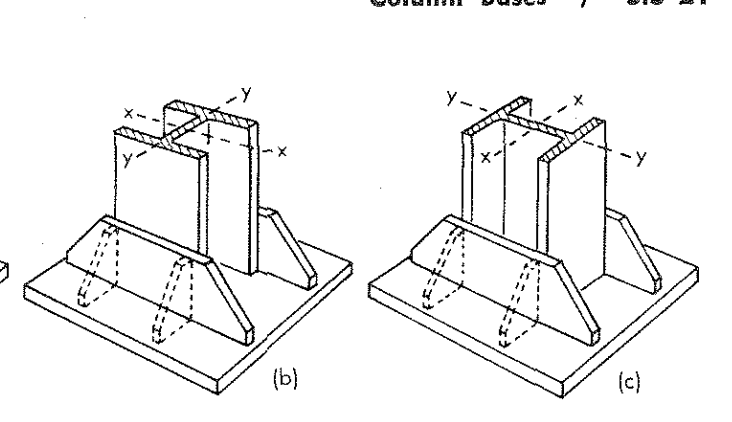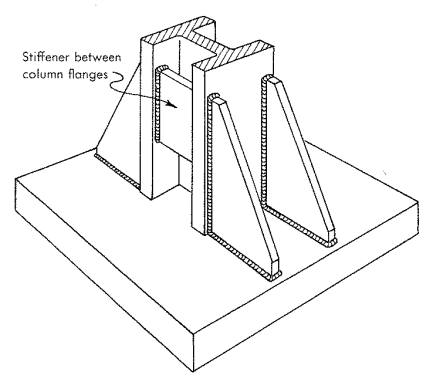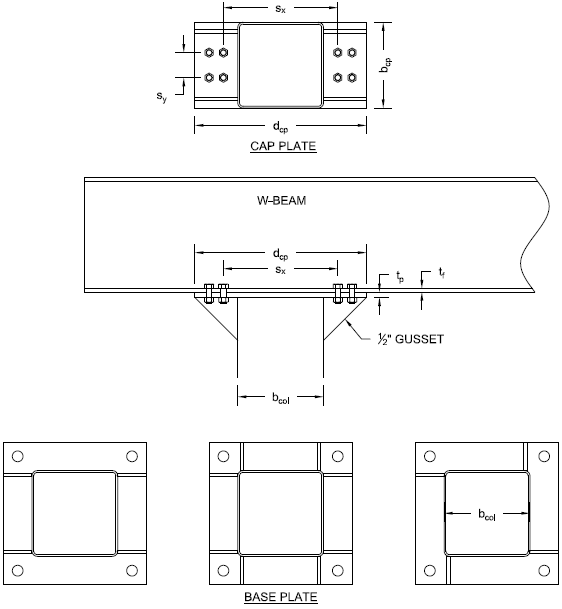P1ENG
Structural
- Aug 25, 2010
- 237
I have a square HSS column that receives moment at the cap plate connected to a W beam. The column is also fixed at the base for anchoring to the foundation. I will start with a fact that I have reviewed AISC Design Guide 1 and (per its recommendation) I would prefer to eliminate the gussets by making the plates thicker. This is all well and good for the base plate because I have a large surface to connect to with any number and pattern of anchor bolts I could use.
However, IF I wanted to design a gusseted base plate, are there any design materials out there that I could read? There are several configurations of gussets that I can think of: triangular gussets coming straight off each corner of the tube (like a swastika), (2) sets of triangular gussets on each face of the tube, or (2) gussets on each corner. Any guidance on how to analyze the anchors, gussets, yield lines of the base plate, etc.?
At the cap plate, I am more limited because I can only connect to the width of beam. Also, the prying action on the W-beam flange requires an unrealistic thickness. I need multiple rows of bolts to transfer the moment. I am aware of AISC DG16 but this is for W beams. Any suggestions on adapting this for HSS? With multiple rows of bolts I also need to figure out how to consider prying action (due to the thickness of cap plate and/or flange thickness of the W beam) as well as checking the W-beam flanges for required stiffeners. Specifically, when you have multiple rows of bolts with different tensions and are checking the previous prying/flange conditions, do the bolts get checked individually or do they influence each other?
I appreciate anyone that can point me in the right direction. My google search for gusseted baseplate design led to many results that reference IS800 (Indian Standard 800). My jurisdiction is the U.S.
Juston Fluckey, SE, PE, AWS CWI
Engineering Consultant
However, IF I wanted to design a gusseted base plate, are there any design materials out there that I could read? There are several configurations of gussets that I can think of: triangular gussets coming straight off each corner of the tube (like a swastika), (2) sets of triangular gussets on each face of the tube, or (2) gussets on each corner. Any guidance on how to analyze the anchors, gussets, yield lines of the base plate, etc.?
At the cap plate, I am more limited because I can only connect to the width of beam. Also, the prying action on the W-beam flange requires an unrealistic thickness. I need multiple rows of bolts to transfer the moment. I am aware of AISC DG16 but this is for W beams. Any suggestions on adapting this for HSS? With multiple rows of bolts I also need to figure out how to consider prying action (due to the thickness of cap plate and/or flange thickness of the W beam) as well as checking the W-beam flanges for required stiffeners. Specifically, when you have multiple rows of bolts with different tensions and are checking the previous prying/flange conditions, do the bolts get checked individually or do they influence each other?
I appreciate anyone that can point me in the right direction. My google search for gusseted baseplate design led to many results that reference IS800 (Indian Standard 800). My jurisdiction is the U.S.
Juston Fluckey, SE, PE, AWS CWI
Engineering Consultant



